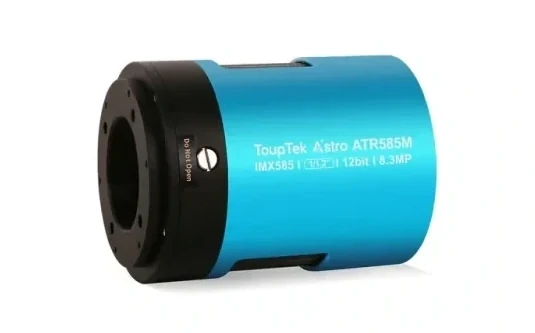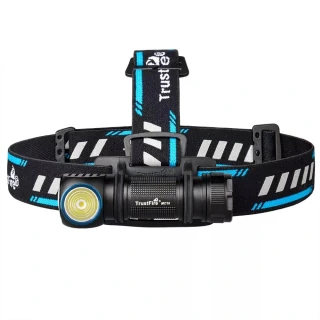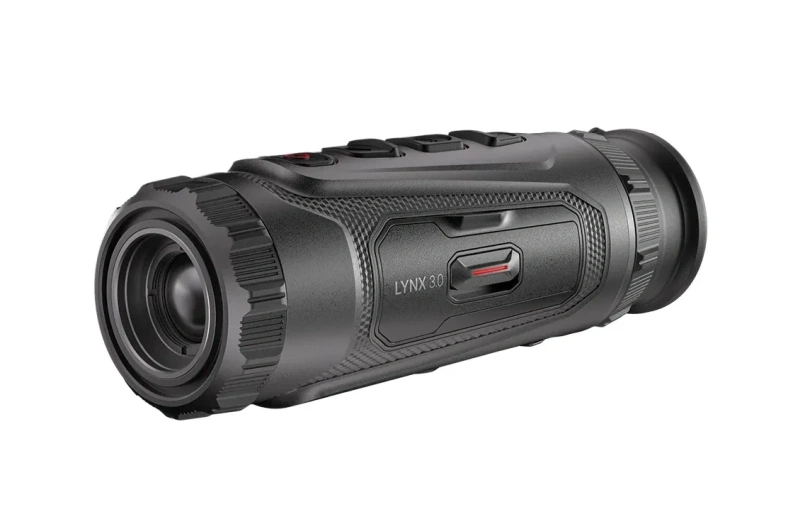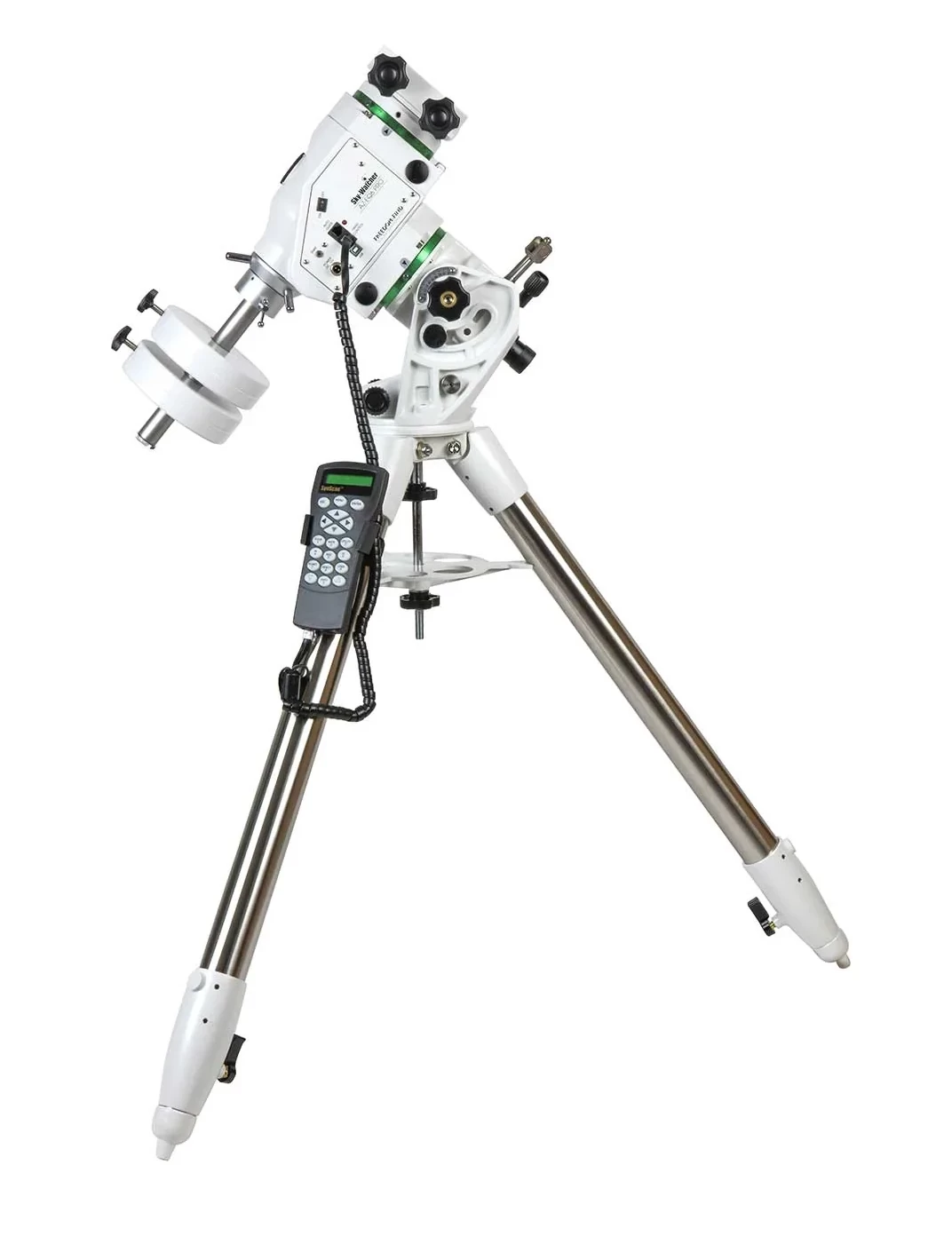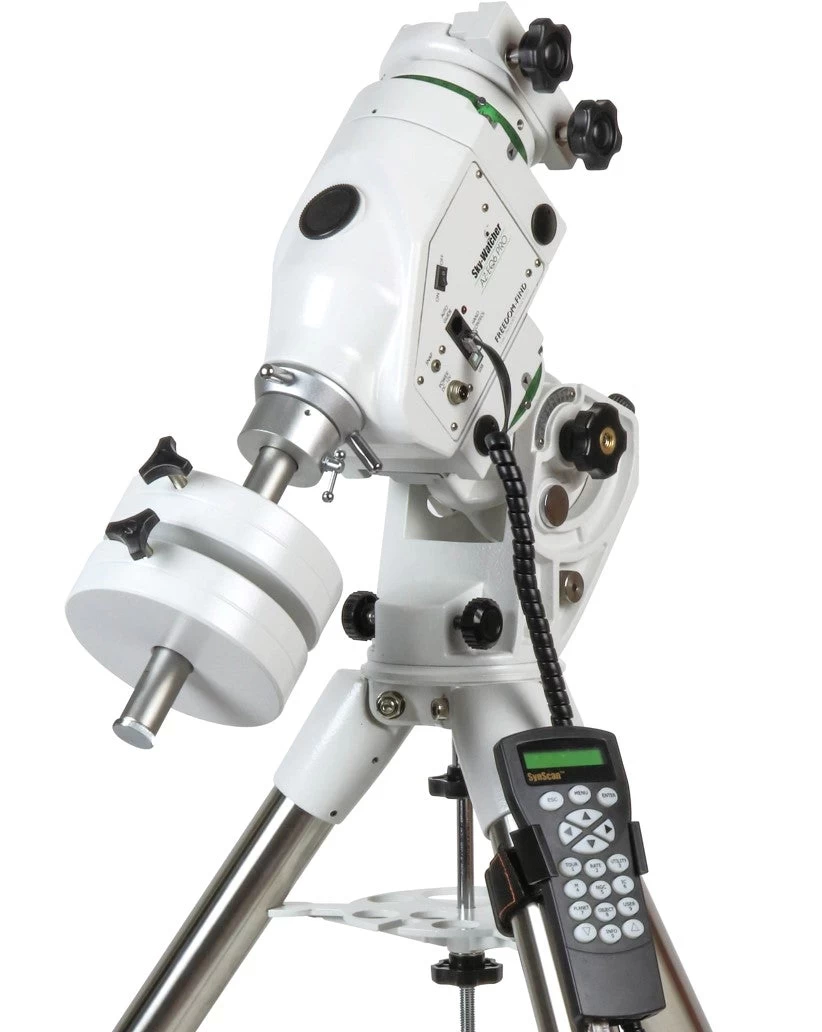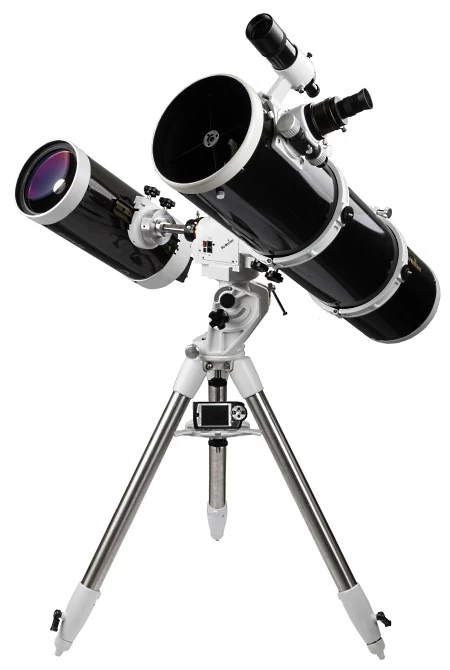SkyWatcher's AZ-EQ-6 Pro has raised the bar even higher in the market for affordable but extremely high quality mounts. The improved version of the EQ-6 Pro offers a number of new features not only for astrophotographers but also for visual observers. Based on its power handling, it is recommended for use with Newtonian telescopes up to 30 cm, SC/MC systems up to 28 cm and 18 cm lens telescopes. The weight of the mount has not changed and remains 16 kg.
In addition, the SynScan handheld controller has an LCD display for communication and a database of more than 42 900 objects, any of which can be accessed with the touch of a few buttons. It also supports computer commutation, making it possible to control the mount from a PC, and last but not least, it can be connected to a GPS receiver. You can find more information about the control here.
The 5 cm thick steel feet as well as the respectable sized mount head create excellent stability. Thanks to the ball-bearing shafts with fewer gear ratios than the basic EQ-6, periodic error is also very low, which can be almost completely eliminated by driving through the built-in autoguide port. Astrophotographers will also appreciate the very fine corrections (up to 0.25x star speed) and the possibility of a teachable periodic error correction (PEC).
Here's a summary of what it offers over and above the proven EQ-6 Pro mount:
- The motors on the RA and DEC axes are connected to the mount with a ribbed belt, which ensures minimal backlash and quieter operation. When shooting astrophotography, the mount responds faster to corrections, allowing for more pinpoint stars.
- Both axes have encoders that allow you to quickly move the telescope anywhere by hand after familiarisation without the hand controller losing orientation. This saves time when switching between sky areas.
- One of the weaknesses of the smaller SkyWatcher mounts was that they clamped the shaft at a point when fixing the shaft, which moved the telescope slightly. The redesigned axle clamping mechanism eliminates this minor annoyance.
- The mount head can be tilted to azimuth mode, allowing another telescope to be mounted in place of the counterweight.
- The telescope mounting rail has been moved closer to the axis of rotation, thus reducing the torque on the telescope. Smaller counterweights are required for use.
- The counterweight shaft has been made thicker, 25 mm, which increases the stability of the system. The shaft can be retracted into the head for compact transport.





